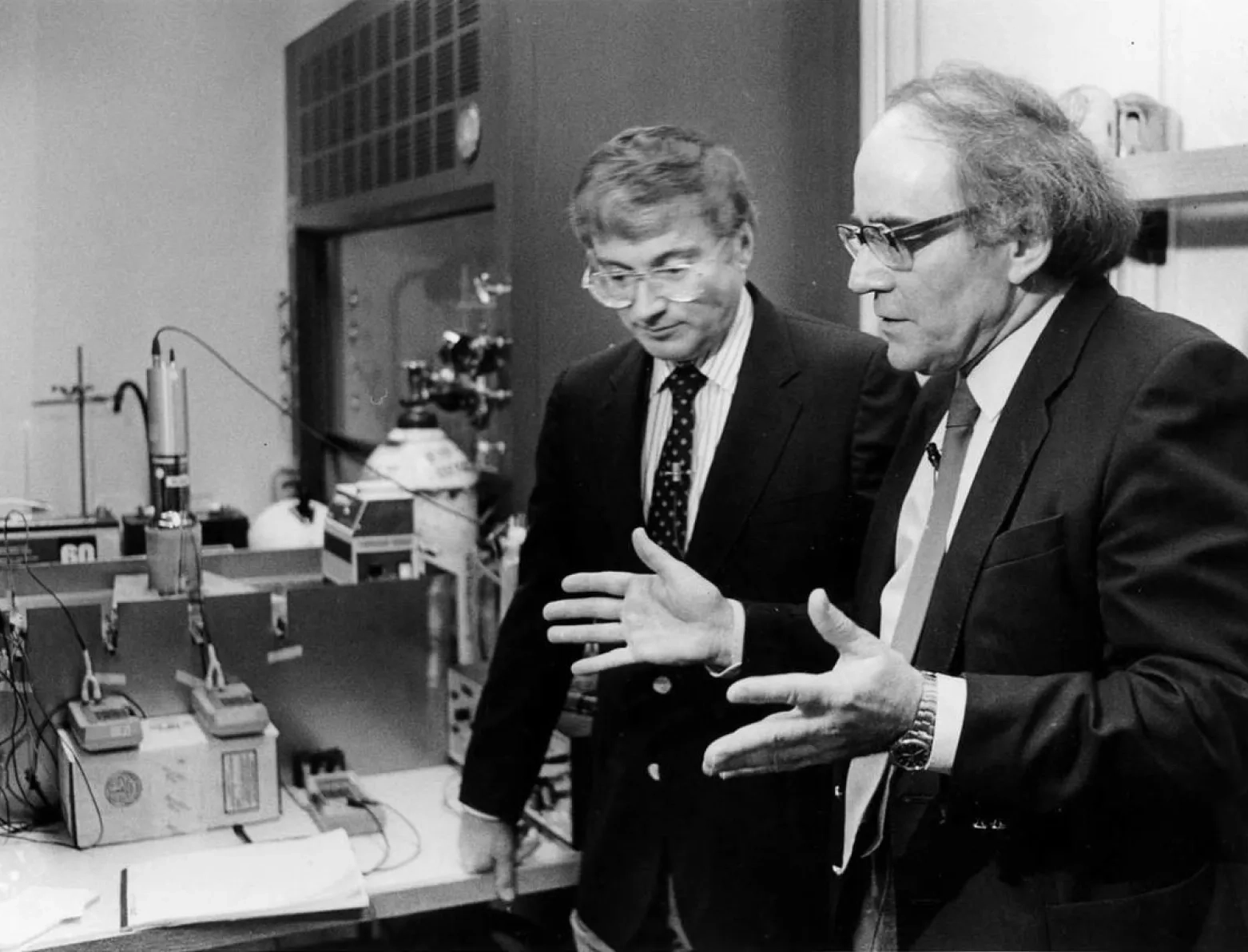Source:
- UC Museum of Paleontology
Resource type:
- Science Story
Time: 2 class periods
Overview
This Science Story uses the "discovery" of cold fusion in the late 1980s to illustrate the nature of scientific misconduct and the importance of scientific behavior and the scrutiny of the scientific community in the process of science. Get tips for using science stories in class.

- [What is science?: Grades 9-12] Scientists strive to test their ideas with evidence from the natural world; a hallmark of science is exposing ideas to testing. (P3, P4, P6, P7, NOS2)
- [What is science?: Grades 13-16] Scientists strive to test their ideas with evidence from the natural world; a hallmark of science is exposing ideas to testing.
- [How science works: Grades 9-12] The process of science involves observation, exploration, testing, communication, and application.
- [How science works: Grades 9-12] Scientific observations can be made directly with our own senses or may be made indirectly through the use of tools.
- [How science works: Grades 9-12] Scientists test their ideas (hypotheses and theories) by figuring out what expectations are generated by an idea and making observations to find out whether those expectations are borne out. (P4, P6)
- [How science works: Grades 9-12] Scientists can test ideas about events and processes long past, very distant, and not directly observable.
- [How science works: Grades 9-12] Scientists test their ideas using multiple lines of evidence. (P6, NOS2)
- [How science works: Grades 9-12] Raw data must be analyzed and interpreted before we can tell whether a scientific idea is likely to be accurate or inaccurate. (P4, P5)
- [How science works: Grades 9-12] Scientists try to be objective and work to identify and avoid bias.
- [How science works: Grades 9-12] Different scientists may interpret the same data in different ways. (P7)
- [How science works: Grades 9-12] Researchers share their findings with the scientific community through scientific publications. (P8)
- [How science works: Grades 9-12] Scientists aim for their studies to be replicable.
- [How science works: Grades 9-12] When a study of a phenomenon cannot be replicated, it may suggest that our current understanding of the phenomenon or our methods of testing are insufficient.
- [How science works: Grades 13-16] The process of science involves observation, exploration, testing, communication, and application.
- [How science works: Grades 13-16] Scientific observations can be made directly with our own senses or may be made indirectly through the use of tools.
- [How science works: Grades 13-16] Scientists test their ideas (hypotheses and theories) by figuring out what expectations are generated by an idea and making observations to find out whether those expectations are borne out.
- [How science works: Grades 13-16] Scientists can test ideas about events and processes long past, very distant, and not directly observable.
- [How science works: Grades 13-16] Scientists test their ideas using multiple lines of evidence.
- [How science works: Grades 13-16] Raw data must be analyzed and interpreted before we can tell whether a scientific idea is likely to be accurate or inaccurate.
- [How science works: Grades 13-16] Scientists try to be objective and work to identify and avoid bias.
- [How science works: Grades 13-16] Different scientists may interpret the same data in different ways; data interpretation can be influenced by a scientist's assumptions, biases, and background.
- [How science works: Grades 13-16] Researchers share their findings with the scientific community through scientific publications.
- [How science works: Grades 13-16] Scientists aim for their studies to be replicable.
- [How science works: Grades 13-16] When a study of a phenomenon cannot be replicated, it may suggest that our current understanding of the phenomenon or our methods of testing are insufficient.
- [The social side of science: Grades 9-12] Science depends on communication within the scientific community. (P7, P8)
- [The social side of science: Grades 9-12] Scientists scrutinize each other's work through peer review and other processes. (P7, NOS5)
- [The social side of science: Grades 9-12] Through a system of checks and balances (which includes peer review), the scientific community helps ensure science's accuracy and helps detect bias, fraud, and misconduct. (P7, NOS5)
- [The social side of science: Grades 13-16] Science depends on communication within the scientific community.
- [The social side of science: Grades 13-16] Scientists scrutinize each other's work through peer review and other processes.
- [The social side of science: Grades 13-16] Through a system of checks and balances (which includes peer review), the scientific community helps ensure science's accuracy and helps detect bias, fraud, and misconduct.
- [The social side of science: Grades 13-16] The scientific community motivates researchers in their investigations by providing recognition and, sometimes, a sense of competition.
- [The social side of science: Grades 13-16] Scientific misconduct can occur when a scientist doesn't fairly evaluate other scientists' work, honestly report results, fairly assign credit, or work within the ethical guidelines of the community.
- [Science and society: Grades 9-12] Scientific research is often focused on topics with the potential to help meet societal needs.
- [Science and society: Grades 13-16] Scientific research is often focused on topics with the potential to help meet societal needs.
- NOS Matrix understanding category 2. Scientific knowledge is based on empirical evidence.
- NOS Matrix understanding category 5. Science is a way of knowing.
- Science and Engineering Practice 4. Analyzing and interpreting data
- Science and Engineering Practice 5. Using mathematics and computational thinking
- Science and Engineering Practice 6. Constructing explanations and designing solutions
- Science and Engineering Practice 7. Engaging in argument from evidence
- Science and Engineering Practice 8. Obtaining, evaluating, and communicating information
There are currently no teaching tips for this resource.
